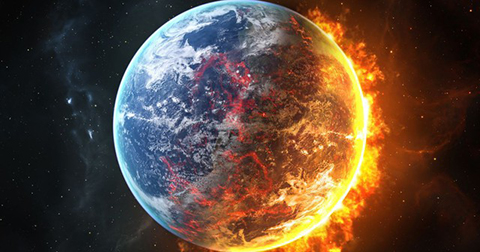The United Nations has warned that due to the impact of the El Nino climate phenomenon, average temperatures in 2024 could be higher than the record high of 2023.
Photo: THE FILIPINO TIMES
2023 is the year climate records continue to be broken
The European Climate Monitoring Agency confirmed that 2023 was the hottest year on record when the Earth was 1.480C warmer than the pre-industrial period (1850 - 1900).
According to scientists , record temperatures are the cause of a series of extreme weather events that have devastated the world over the past year.
“This is a very special year, climatically on a particular level, even compared to other very warm years,” said C3S Director Carlo Buontempo.
Comparing ancient climate records from sources such as tree rings and air bubbles in glaciers, Mr Buontempo said this was “very likely” the warmest year in the past 100,000 years.
On average, in 2023, the Earth was 1.480C warmer than the pre-industrial period (1850 - 1900), as humans began burning fossil fuels on an industrial scale, releasing CO2 into the atmosphere.
This year the heat is even worse!
In a report on January 12, the World Meteorological Organization (WMO) of the United Nations said that temperature records were set every month from June to December 2023 and this warming trend will continue in 2024 due to the El Nino phenomenon causing the climate to warm.
Sharing the same view, the US National Oceanic and Atmospheric Administration (NOAA) predicts that there is a 67% chance that 2024 will be warmer than 2023 and a 99% certainty that 2024 will be among the top 5 hottest years ever.
The WMO said that the average global annual temperature in 2023 was 1.450C higher than the pre-industrial period (1850-1900). The non-profit research organization Berkeley Earth even gave the figure of 1.540C.
WMO chief Celeste Saulo warned that the El Nino phenomenon appearing in mid-2023 could make the Earth even hotter in 2024.
According to Ms. Saulo, climate change is currently “the greatest challenge facing humanity.” A report by the WMO in November 2023 showed that concentrations of three greenhouse gases, carbon dioxide, methane and nitrous oxide, reached record highs in 2022 and continued to increase in 2023.
“Because El Nino typically has the greatest impact on global temperatures after its peak, 2024 could be even warmer,” the WMO chief said.
El Nino returns in late 2023, more than three years after La Nina appeared in the Pacific Ocean .
Unlike La Nina, which causes heavy rains and helps cool the Earth somewhat, El Nino occurs when winds blowing westward along the equator slow down and warm water is pushed eastward, causing ocean surface temperatures to warm. This phenomenon usually occurs about every 3-4 years and lasts 8-12 months.
Compiled by NGUYEN TAN
Source































![[Photo] National Assembly Chairman attends the seminar "Building and operating an international financial center and recommendations for Vietnam"](https://vphoto.vietnam.vn/thumb/1200x675/vietnam/resource/IMAGE/2025/7/28/76393436936e457db31ec84433289f72)





































































Comment (0)